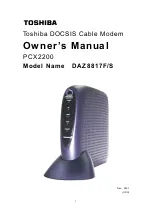
22
MODULAR MODEM ELIMINATOR
2.3.4 I
NTERFACING WITH
T1
OR
E1 I
NTERFACE
M
ODULE
Figure 2-10
shows a typical interface-signal flow diagram for an interface converter
application that uses a T1 or E1 interface module in conjunction with a general-
purpose interface module. This application allows the transfer of data to and from
the DTE—for example, a bridge or a data multiplexor, through a T1 or E1 line.
In this application, the mode jumper of the interface module connected to the
DTE must be set to the DCE position.
The DTE must use external timing. The jumper of the T1 or E1 interface
module is set in accordance with the system timing requirements:
• LBT—used to lock the DTE timing to the recovered lock signal. This setting
allows locking the DTE timing to the accurate timing provided by the T1 or E1
network. The DTE must then use external timing.
• INT—used to lock the DTE timing to the internal clock source of the T1 or E1
interface module. The DTE must use external timing.
• EX—used to lock the transmit timing of the T1 or E1 interface module to the
DTE timing. In this case, the equipment at the remote end of the T1 or E1 link
must use loopback timing.
The EX setting is suitable for applications that require locking the timing of the
remote equipment to the timing of the local DTE—for example, when the local
DTE uses internal timing, or is connected to an accurate timing source that must
be propagated to the remote end.
Figure 2-10. T1/E1 interfacing modules (interface-converter application).
Transmit
Circuits
T1 or E1 Interface
Internal
Oscillator
Receive
Circuits
J1
Receive
Line
Transmit
Line
DCE Mode
DTE
Internal Clock for Ext Timing
External Clock for LBT
and INT Timing
Carrier Detection
Recovered
Clock
TTC
TC
TD
RTS
RC
RD
DCD
DSR
DTR
CTS
PG
SG
Содержание ME260A
Страница 48: ...NOTES...
Страница 49: ...NOTES...
















































